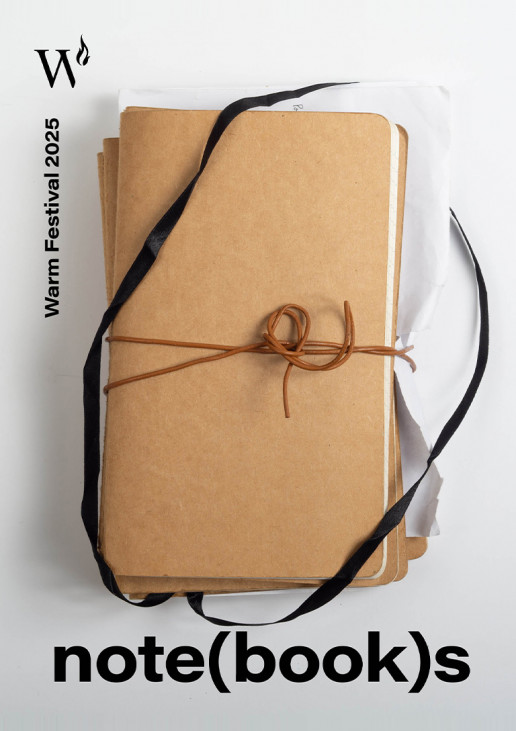
Designed by Lejla Hodžić
Home of ZANAT, Sarajevo
WARM Festival 2025
note(book)s is a growing, living archive of original notebooks used by journalists, writers, and artists while reporting from conflict zones and crisis areas around the world. The project was launched by the WARM Foundation in 2024, with its first major public exhibition opening in Sarajevo during WARM Festival 2025, in partnership with ZANAT, Bosnia’s internationally acclaimed woodcraft and design company. The Sarajevo exhibition showcases around 30 notebooks spanning from the early 1990s to today. These include field notes from Bosnia and Herzegovina, Rwanda, Iraq, Lebanon, Syria, Libya, Palestine, Ukraine, Myanmar, North Korea, Papua New Guinea, Mexico, and beyond. Inside the notebooks are handwritten entries, quotes, maps, sketches, lists, and fragments – traces of stories being shaped in real time, often under extreme conditions. Each notebook is displayed in a custom-designed wooden box handcrafted by ZANAT. The exhibition is curated by Damir Šagolj and designed by Lejla Hodžić, with each object treated as both personal artifact and historical document. This first edition of note(book)s marks only the beginning. The collection will continue to expand with new contributions from the field, offering a raw, intimate, and enduring view into the work of those who report, witness, and remember.
Participating Authors: Jon Lee Andreson, Pascale Bourgaux, Fabio Bucciarelli, Enrico Dagnino, Agnes Dherbeys, Javier Espinosa, Alixandra Fazzina, Jean Hatzfeld, Noriko Hayashi, Cecile Hennion, Carol Isoux, Katia Jarjoura, Gary Knight, Olga Kravets, Andrew RC Marshall, Sophie Nivelle-Cardinale, Rémy Ourdan, Scott Peterson, Elizabeth Rubin, Jerome Sessini, Kurt Schork, Damir Šagolj, Ed Vulliamy, Alfred Yaghobzadeh, Rafael Yaghobzadeh.